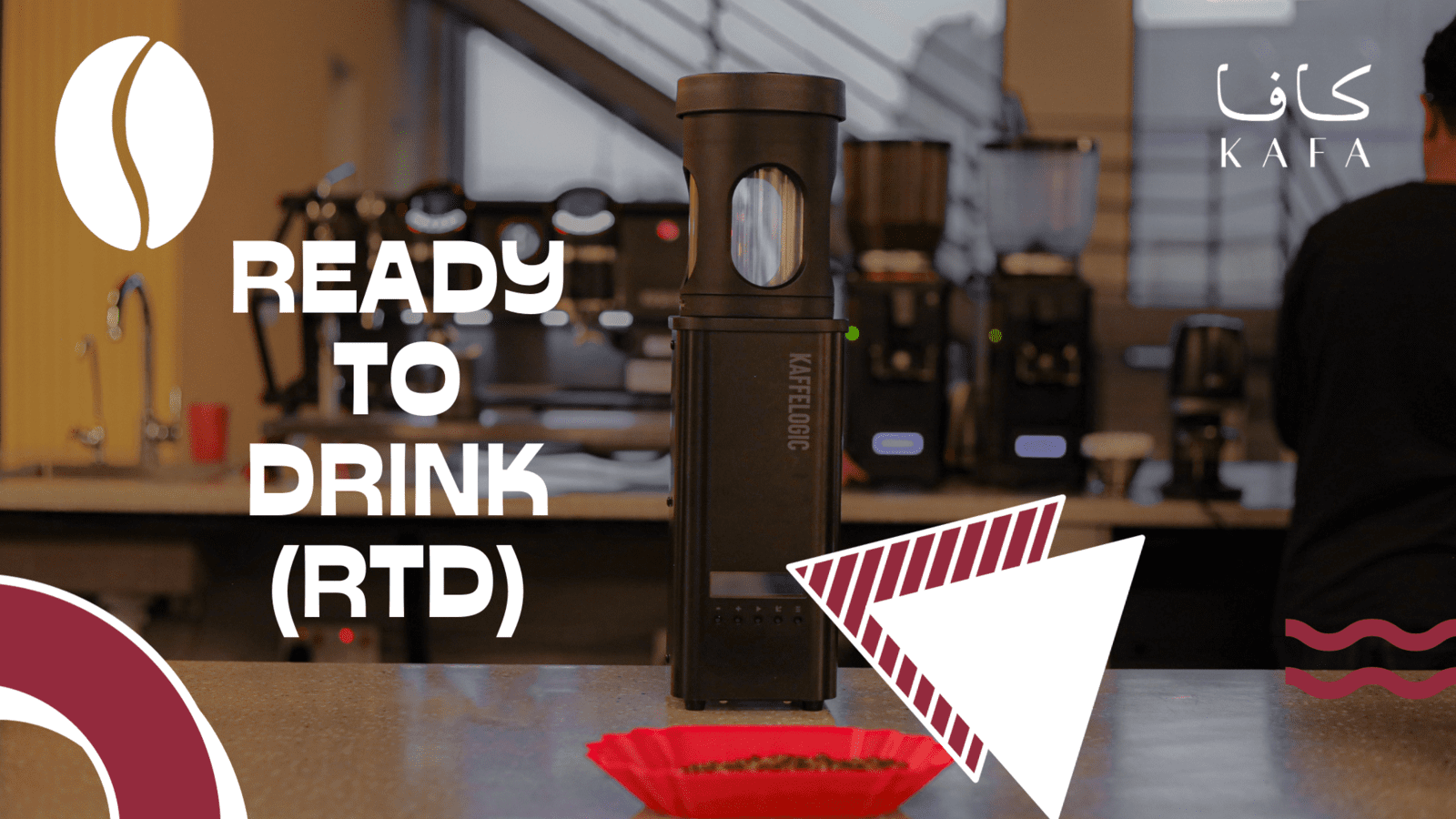Ready To Drink

مع بروفايل "جاهز للشرب" أو RTD في حمامصات Kaffelogic يمكنك أن تحمص قهوتك وبعد التحميص مباشرة يمكنك الإستمتاع بكوب قهوة متوازن وبإيحاءات واضحة.
Ready to drink profile?
When roasting coffee, Carbon dioxide (CO2) naturally builds up within the Coffee beans, this is a natural process. Allowing the beans to rest allows that CO2 to leave the bean, this results in a balanced flavour.
The above is correct for all roasting. The rules, however, around roasted coffee management become blurred in air roasters.
With drum roasting, we have an amount of latent energy build up reacting on the bean. Roasting rules like forever decreasing ROR and managing airflow/heat application at specific stages are skilfully used to manipulate this build-up and manage its impact on the coffee bean. The goals here are to minimise conductivity and maximise convection energy application, getting the roast propelling in the right direction and at the right roasting pace.
Applying these rules works but with the latent energy build-up, this process becomes hard to control. What happens if we can manipulate this rate and pace at a minimum delay but maximum efficiency? Now enters the Air roaster and in this case- The Kaffelogic Nano7.
With air roasting, there is a minimal amount of latent energy build-up in the roast chamber, and although there is still conductive energy present, it is comparatively much lower. This low conductive energy helps provide overall cleanliness in mouthfeel to the finished coffee.
The heated air that the coffee is surrounded by in the chamber does all the roasting work. The roaster can then adjust this heat and intensity through its fan driving heat forward to develop flavour.
The same rules of roasting apply here to start chemical reactions breaking down the inner structure of the bean. With air roasting and little latent heat build-up, we can manipulate this phase to a greater degree to create further complexity in flavour by skewing this chemical transaction.
The largest adaptation is to the ROR curve during the Maillard phase. A delay as short as 7 seconds between application and result with low latent energy will allow the roaster to slow/ speed the ROR curve and even create a few slopes. This all acts on the forward momentum of the coffee's development and its resulting amount of C02 build-up.
If we can manipulate the way the C02 is squeezed out of the coffee in the Maillard phase with minimal risk to the flavour development, we can effectively speed up the resting process from days to hours.
We achieve the above by a more aggressive heat application into the early Maillard phase and then a dramatic slowing down and speeding up of ROR points every 10 to 30 seconds. If you choose to control in minute intervals then this effect is lost. This almost step-like, negative looking arc in the forever decreasing ROR results in this C02 vacuum.
The key here is the transition phases between the sharp decrease and decreasing plateau and how this relates to flavour development. Too slow and not enough body but too much C02 will remain in the bean. Too fast and the sugars will over caramelise with degeneration of the cells leading to bitter tastes with way too little C02 gas and flat coffee.
The balance between this and the total time of the phase relative to the final roast will allow you to develop a roasting profile to grind and extract/ brew straight away. Too long and intense in this Maillard phase will result in a crash and flick.
This is where the origin or process starts to show its hand.
You may only find that the flavours peak on the second day but with the majority of the roasts, they are flat on the fourth.
The key here is to enjoy the coffee experience and push roasting boundaries with taste always as your guide.
Ready to drink profile?
When roasting coffee, Carbon dioxide (CO2) naturally builds up within the Coffee beans, this is a natural process. Allowing the beans to rest allows that CO2 to leave the bean, this results in a balanced flavour.
The above is correct for all roasting. The rules, however, around roasted coffee management become blurred in air roasters.
With drum roasting, we have an amount of latent energy build up reacting on the bean. Roasting rules like forever decreasing ROR and managing airflow/heat application at specific stages are skilfully used to manipulate this build-up and manage its impact on the coffee bean. The goals here are to minimise conductivity and maximise convection energy application, getting the roast propelling in the right direction and at the right roasting pace.
Applying these rules works but with the latent energy build-up, this process becomes hard to control. What happens if we can manipulate this rate and pace at a minimum delay but maximum efficiency? Now enters the Air roaster and in this case- The Kaffelogic Nano7.
With air roasting, there is a minimal amount of latent energy build-up in the roast chamber, and although there is still conductive energy present, it is comparatively much lower. This low conductive energy helps provide overall cleanliness in mouthfeel to the finished coffee.
The heated air that the coffee is surrounded by in the chamber does all the roasting work. The roaster can then adjust this heat and intensity through its fan driving heat forward to develop flavour.
The same rules of roasting apply here to start chemical reactions breaking down the inner structure of the bean. With air roasting and little latent heat build-up, we can manipulate this phase to a greater degree to create further complexity in flavour by skewing this chemical transaction.
The largest adaptation is to the ROR curve during the Maillard phase. A delay as short as 7 seconds between application and result with low latent energy will allow the roaster to slow/ speed the ROR curve and even create a few slopes. This all acts on the forward momentum of the coffee's development and its resulting amount of C02 build-up.
If we can manipulate the way the C02 is squeezed out of the coffee in the Maillard phase with minimal risk to the flavour development, we can effectively speed up the resting process from days to hours.
We achieve the above by a more aggressive heat application into the early Maillard phase and then a dramatic slowing down and speeding up of ROR points every 10 to 30 seconds. If you choose to control in minute intervals then this effect is lost. This almost step-like, negative looking arc in the forever decreasing ROR results in this C02 vacuum.
The key here is the transition phases between the sharp decrease and decreasing plateau and how this relates to flavour development. Too slow and not enough body but too much C02 will remain in the bean. Too fast and the sugars will over caramelise with degeneration of the cells leading to bitter tastes with way too little C02 gas and flat coffee.
The balance between this and the total time of the phase relative to the final roast will allow you to develop a roasting profile to grind and extract/ brew straight away. Too long and intense in this Maillard phase will result in a crash and flick.
This is where the origin or process starts to show its hand.
You may only find that the flavours peak on the second day but with the majority of the roasts, they are flat on the fourth.
The key here is to enjoy the coffee experience and push roasting boundaries with taste always as your guide.
These RTD profiles have been developed on the Kaffelogic Nano 7 with a 120g roasting capacity and using the impressive Kaffelogic Studio roasting profile software.


